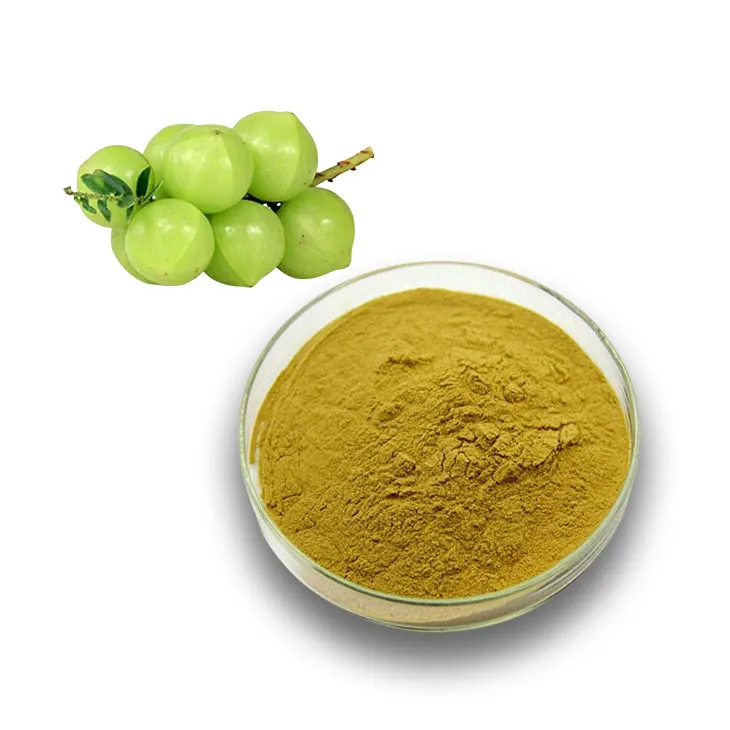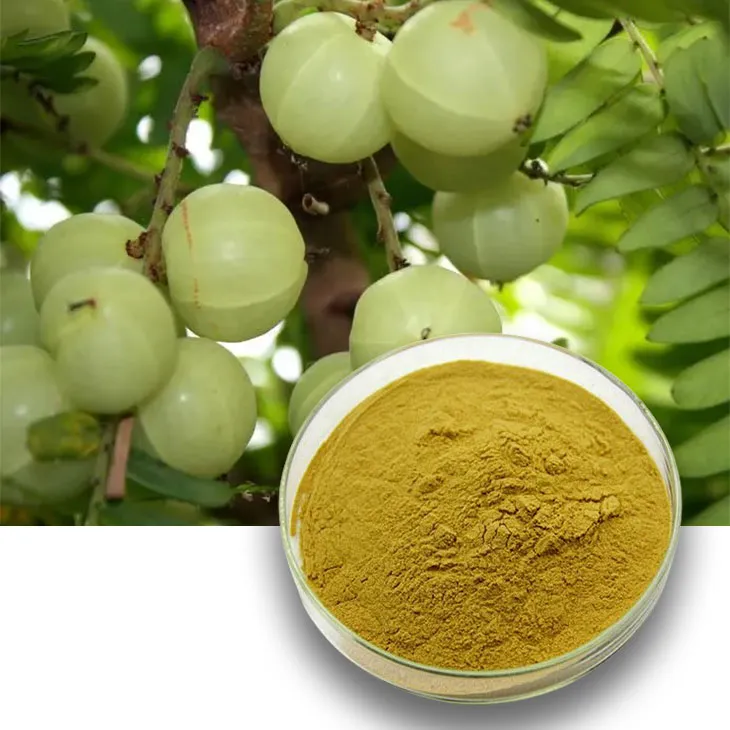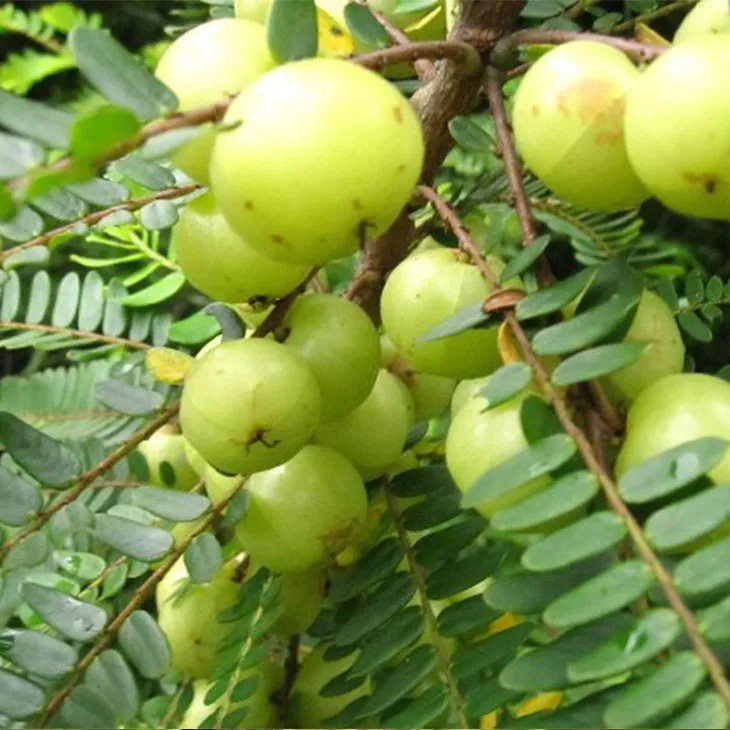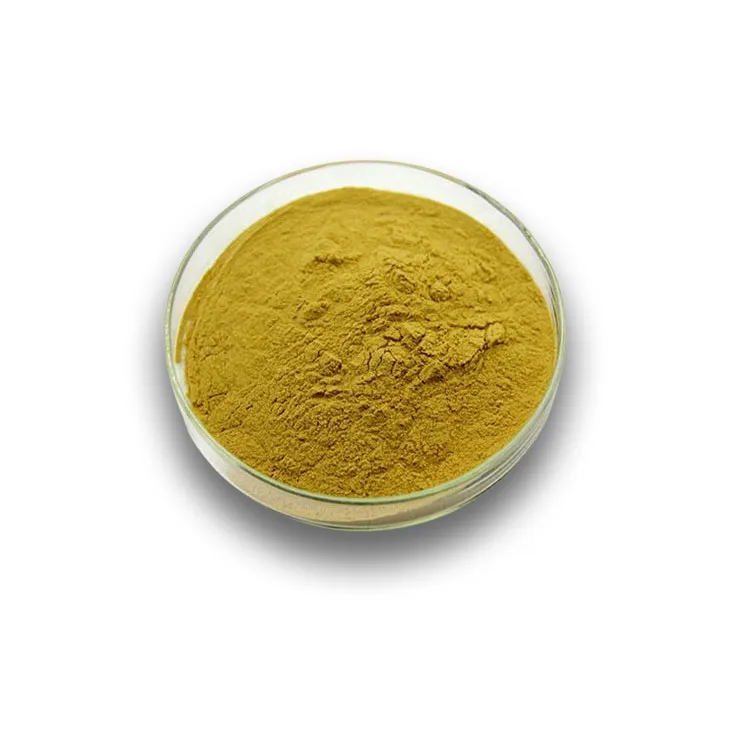- 0086-571-85302990
- sales@greenskybio.com
The process of extracting Phyllanthus emblica polyphenols from Phyllanthus emblica extract.
2024-11-30

1. Introduction
Phyllanthus emblica, also known as Indian gooseberry, has been used in traditional medicine for centuries. It is rich in various bioactive compounds, among which polyphenols are of particular interest. Polyphenols are known for their antioxidant, anti - inflammatory, and other beneficial properties. Extracting Phyllanthus emblica polyphenols from its extract is crucial for further utilization in different fields such as medicine, health products, and cosmetics. This article will explore the extraction process in detail.

2. Different extraction methods
2.1 Solvent extraction
Solvent extraction is one of the most common methods for extracting Phyllanthus emblica polyphenols. In this method, a suitable solvent is chosen to dissolve the polyphenols from the extract.
- Common solvents include ethanol, methanol, and water - ethanol mixtures. Ethanol is often preferred due to its relatively low toxicity and good solubility for polyphenols.
- The process involves mixing the Phyllanthus Emblica Extract with the solvent at a certain ratio. For example, a ratio of 1:5 (extract:solvent) might be used. Then, the mixture is stirred for a specific period, usually several hours to ensure sufficient extraction.
2.2 Ultrasonic - assisted extraction
Ultrasonic - assisted extraction has gained popularity in recent years.
- It utilizes ultrasonic waves to enhance the extraction process. The ultrasonic waves create cavitation bubbles in the solvent - extract mixture. When these bubbles collapse, they generate intense local heating and pressure, which helps to break the cell walls of the Phyllanthus emblica components and release the polyphenols more effectively.
- Compared to traditional solvent extraction, ultrasonic - assisted extraction can significantly reduce the extraction time. For example, while solvent extraction might take 4 - 6 hours, ultrasonic - assisted extraction can achieve similar extraction yields in 30 minutes to 2 hours.

3. Factors influencing the extraction efficiency
3.1 Extraction time
Extraction time plays a crucial role in the extraction of Phyllanthus emblica polyphenols.
- In solvent extraction, as the extraction time increases, the amount of polyphenols extracted generally also increases up to a certain point. However, after a long time, the extraction may reach a saturation state, and further increasing the time may not significantly improve the yield. For example, in ethanol extraction, after about 6 hours, the increase in polyphenol yield becomes marginal.
- In ultrasonic - assisted extraction, the relationship between extraction time and yield is also significant. Although it is faster than solvent extraction, if the time is too short, the extraction may be incomplete. On the other hand, if the time is too long, it may lead to the degradation of polyphenols due to excessive energy input.
3.2 Extraction temperature
Extraction temperature is another important factor.
- For solvent extraction, increasing the temperature can enhance the solubility of polyphenols in the solvent, thus increasing the extraction efficiency. However, high temperatures may also cause the degradation of polyphenols. For instance, when using ethanol extraction, a temperature range of 40 - 60°C is often considered optimal. Temperatures above 80°C may lead to a decrease in the quality of the extracted polyphenols.
- In ultrasonic - assisted extraction, temperature also affects the process. The ultrasonic waves generate heat during the process, and if not properly controlled, the temperature may rise too quickly, causing damage to the polyphenols. Therefore, in some cases, cooling systems are required to maintain the temperature within a suitable range.
3.3 Solvent type
Solvent type has a direct impact on the extraction of polyphenols.
- Ethanol, as mentioned before, is a popular choice due to its good solubility for polyphenols and relatively low toxicity. Methanol also has high solubility but is more toxic, so it requires more careful handling in the extraction process.
- Water - ethanol mixtures are also commonly used. The ratio of water to ethanol in the mixture can affect the extraction efficiency. For example, a mixture with a higher ethanol content may be more effective in extracting lipophilic polyphenols, while a higher water content may be better for hydrophilic polyphenols.

4. Significance of Phyllanthus emblica polyphenols
4.1 In medicine
Phyllanthus emblica polyphenols have shown great potential in the field of medicine.
- They possess strong antioxidant properties. Antioxidants are important in preventing oxidative stress in the body, which is associated with various diseases such as cancer, cardiovascular diseases, and neurodegenerative diseases. The polyphenols can scavenge free radicals, thereby reducing the damage caused by oxidative stress.
- They also have anti - inflammatory effects. Inflammation is a key factor in many diseases, and the anti - inflammatory properties of Phyllanthus emblica polyphenols can help in the treatment and prevention of inflammatory - related diseases, such as arthritis.
4.2 In health products
Health products containing Phyllanthus emblica polyphenols are becoming increasingly popular.
- These polyphenols can be added to dietary supplements. They can help improve the immune system, as the antioxidant and anti - inflammatory properties contribute to overall health and well - being. For example, some health products claim to boost energy levels and enhance the body's resistance to diseases.
- They are also used in products for skin health. The antioxidant properties can protect the skin from damage caused by UV radiation and environmental pollutants, reducing the signs of aging such as wrinkles and fine lines.
4.3 In cosmetics
In the field of cosmetics, Phyllanthus emblica polyphenols are valuable ingredients.
- They can be incorporated into creams, lotions, and serums. The antioxidant and anti - inflammatory properties make them ideal for skin care products. For instance, they can help soothe irritated skin, reduce redness, and improve the overall complexion.
- They also have potential in hair care products. The polyphenols can nourish the hair follicles, strengthen the hair, and add shine. Some hair products containing Phyllanthus emblica polyphenols claim to prevent hair loss and promote hair growth.

5. Conclusion
The extraction of Phyllanthus emblica polyphenols from its extract is a complex process that is influenced by multiple factors such as extraction methods, extraction time, temperature, and solvent type. Understanding these factors is crucial for obtaining high - quality polyphenols with high yields. The significance of Phyllanthus emblica polyphenols in medicine, health products, and cosmetics makes their extraction and further research even more important. Future research may focus on optimizing the extraction process further, exploring new extraction techniques, and investigating more potential applications of these valuable polyphenols.
FAQ:
What are the common extraction methods for Phyllanthus emblica polyphenols?
Common extraction methods for Phyllanthus emblica polyphenols include solvent extraction and ultrasonic - assisted extraction. Solvent extraction involves using a suitable solvent to dissolve the polyphenols from the Phyllanthus Emblica Extract. Ultrasonic - assisted extraction utilizes ultrasonic waves to enhance the extraction efficiency by promoting the mass transfer process.
How does extraction time affect the extraction of Phyllanthus emblica polyphenols?
The extraction time can significantly impact the extraction of Phyllanthus emblica polyphenols. Initially, as the extraction time increases, the yield of polyphenols may also increase because more time allows for a greater amount of polyphenols to be transferred from the extract into the solvent. However, after a certain point, the yield may reach a plateau or even decline due to possible degradation or re - adsorption of the polyphenols.
What role does temperature play in the extraction of Phyllanthus emblica polyphenols?
Temperature is an important factor in the extraction process. Higher temperatures generally increase the solubility of polyphenols, which can enhance the extraction efficiency. But excessive temperatures may also cause the degradation of polyphenols, reducing their quality. Therefore, an appropriate temperature range needs to be determined to balance the extraction yield and the quality of the polyphenols.
Why are Phyllanthus emblica polyphenols significant?
Phyllanthus emblica polyphenols are significant for several reasons. In the field of medicine, they may possess antioxidant, anti - inflammatory, and anti - microbial properties, which can be potentially used for the treatment or prevention of various diseases. In health products, they can be added as functional ingredients to promote health. In cosmetics, they may contribute to anti - aging and skin - protecting effects due to their antioxidant properties.
How does the solvent type influence the extraction of Phyllanthus emblica polyphenols?
Different solvent types have different solubilities for Phyllanthus emblica polyphenols. For example, polar solvents are often more effective in extracting polyphenols as they can better interact with the polar groups in the polyphenols. However, non - polar solvents may also be used in combination with polar solvents in some cases to improve the extraction selectivity. The choice of solvent type needs to consider factors such as the solubility of polyphenols, the cost, and the safety of the solvent.
Related literature
- Title: Extraction and Characterization of Polyphenols from Phyllanthus emblica"
- Title: "Optimization of the Extraction Process of Phyllanthus emblica Polyphenols for Medicinal Applications"
- Title: "The Role of Phyllanthus emblica Polyphenols in Cosmetics: A Review"
- ▶ Hesperidin
- ▶ citrus bioflavonoids
- ▶ plant extract
- ▶ lycopene
- ▶ Diosmin
- ▶ Grape seed extract
- ▶ Sea buckthorn Juice Powder
- ▶ Beetroot powder
- ▶ Hops Extract
- ▶ Artichoke Extract
- ▶ Reishi mushroom extract
- ▶ Astaxanthin
- ▶ Green Tea Extract
- ▶ Curcumin Extract
- ▶ Horse Chestnut Extract
- ▶ Other Problems
- ▶ Boswellia Serrata Extract
- ▶ Resveratrol Extract
- ▶ Marigold Extract
- ▶ Grape Leaf Extract
- ▶ blog3
- ▶ blog4
-
Nature's Bounty Okra Extract.
2024-11-30
-
Chinese Oyster Peptide Powder Factories.
2024-11-30
-
The best organic L - carnitine.
2024-11-30
-
Certified organic acerola cherry extract.
2024-11-30
-
Wholesale β - carotene suppliers.
2024-11-30
-
Chinese lemon balm extract factories.
2024-11-30
-
100% Pure Organic Bitter Melon Extract.
2024-11-30
-
Cranberry Extract
2024-11-30
-
Nutmeg Extract
2024-11-30
-
Purple Sweet Potato Extract
2024-11-30
-
Rose Hip Extract
2024-11-30
-
Uridine-5'-monophosphate Disodium salt
2024-11-30
-
Chaste Berry Extract
2024-11-30
-
White Willow Bark Extract
2024-11-30
-
Aminolevulinic acid
2024-11-30
-
Calendula Extract
2024-11-30
-
Apricot Powder
2024-11-30





















